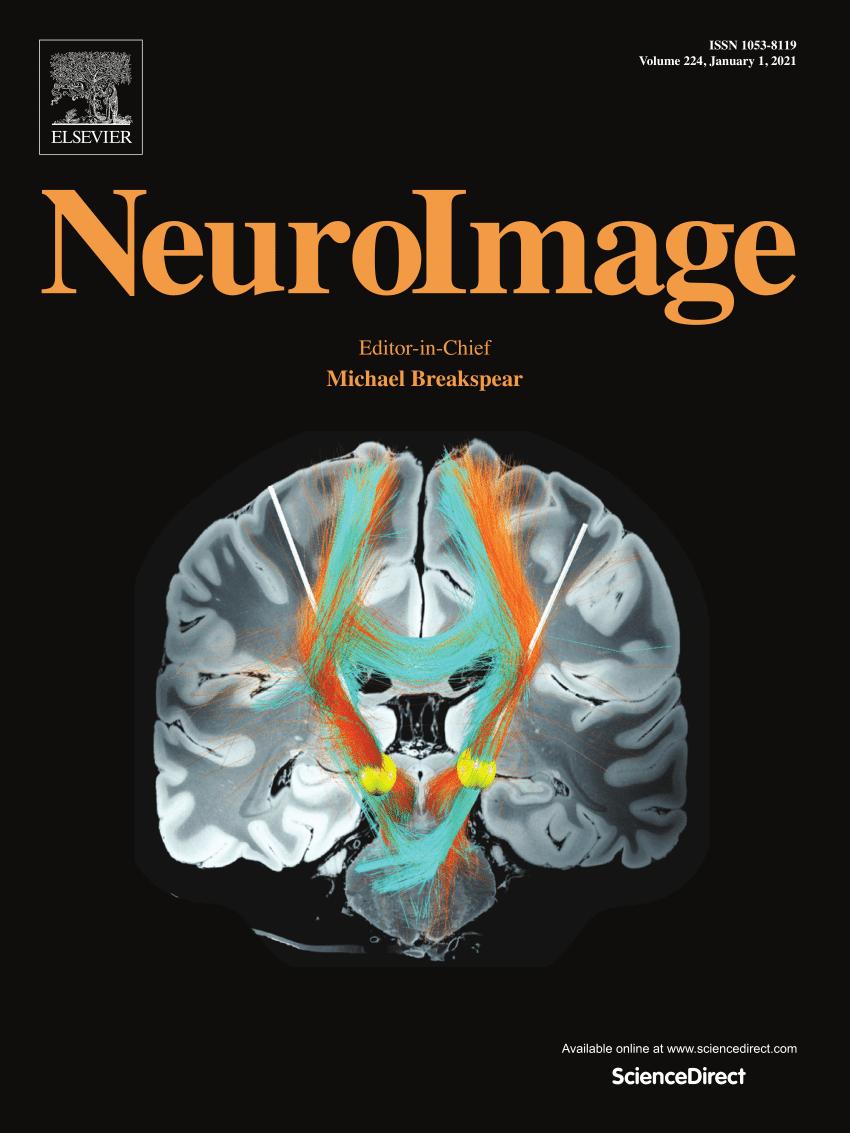实验性炎症对人类心脏内感受信号和心率变异性的神经元处理的影响
IF 4.5
2区 医学
Q1 NEUROIMAGING
引用次数: 0
摘要
内感受,或对身体内部状态的感知,对于个体在需要时照顾身体的信号至关重要。它使行为适应疾病状态,从而进一步影响自主神经系统(ANS)的活动。急性炎症是否影响内感受性加工以及这与疾病行为的关系尚不清楚。因此,我们研究了实验性内毒素血症参与者的内感受加工。在神经影像学研究中,心跳诱发电位(HEP)——被定义为脑电图(EEG)记录期间被时间锁定在心电图(ECG) r波上的事件相关电位——已经成为一种很有前景的心脏内感受性处理指标。我们分析了静脉注射脂多糖(LPS)的效果;0.4 ng/kg)或安慰剂对健康女性参与者(n = 52)在注射前和注射后2小时静息状态EEG和ECG记录中的HEP振幅和ANS功能的影响。我们的研究结果显示,与安慰剂组相比,注射后2小时,LPS组皮质醇和细胞因子水平升高,交感神经活动增加,副交感神经活动减少。注射安慰剂的参与者在早期时间框架(255-455 ms)表现出较低的注射后HEP振幅基线差异,表明给药后2小时HEP较低。此外,注射后HEP振幅在两组之间有所不同,这表明虽然安慰剂组的参与者在注射后HEP振幅发生了变化,但HEP对LPS的处理仍然没有反应。这些发现在预测加工、期望违反和对外部和内感受线索的注意方向的背景下进行了讨论。未来的研究应进一步探讨LPS剂量的作用,探索实验性炎症下内感受的行为措施。本文章由计算机程序翻译,如有差异,请以英文原文为准。

Impact of experimental inflammation on the neuronal processing of cardiac interoceptive signals and heart rate variability in humans
Interoception, or the perception of internal somatic states, is crucial for signaling the individual to take care of the body when needed. It enables behavioral adaptations to sickness states, which further impact autonomic nervous system (ANS) activity. Whether acute inflammation affects interoceptive processing and how this relates to sickness behavior remains unknown. Therefore, we investigated interoceptive processing in participants undergoing experimental endotoxemia. In neuroimaging research, heartbeat-evoked potentials (HEP) - defined as event-related potentials time-locked to electrocardiogram (ECG) R-waves during electroencephalogram (EEG) recordings - have emerged as a promising metric for cardiac interoceptive processing. We analyzed the effects of intravenous administration of lipopolysaccharide (LPS; 0.4 ng/kg) or placebo, on HEP amplitudes and ANS functioning in healthy, female participants (n = 52) during 8 min resting-state EEG and ECG recordings before and 2 h after injections. Our results showed increased cortisol and cytokine levels in the LPS group, along with increased sympathetic and decreased parasympathetic activity 2 h after injections compared to the placebo group. Placebo-injected participants exhibited lower post injection-baseline differences in HEP amplitudes in an early timeframe (255–455 ms), indicating lower HEPs 2 h after administrations. Moreover, post-injection HEP amplitudes differed between groups, suggesting that while participants in the placebo group showed altered HEP amplitudes after injection, HEPs remained unresponsive to LPS administration. These findings are discussed in the context of predictive processing, expectation violation and attention direction to external and interoceptive cues. Future research should further investigate the role of LPS dose and explore behavioral measures of interoception under experimental inflammation.
求助全文
通过发布文献求助,成功后即可免费获取论文全文。
去求助
来源期刊

NeuroImage
医学-核医学
CiteScore
11.30
自引率
10.50%
发文量
809
审稿时长
63 days
期刊介绍:
NeuroImage, a Journal of Brain Function provides a vehicle for communicating important advances in acquiring, analyzing, and modelling neuroimaging data and in applying these techniques to the study of structure-function and brain-behavior relationships. Though the emphasis is on the macroscopic level of human brain organization, meso-and microscopic neuroimaging across all species will be considered if informative for understanding the aforementioned relationships.
 求助内容:
求助内容: 应助结果提醒方式:
应助结果提醒方式:


